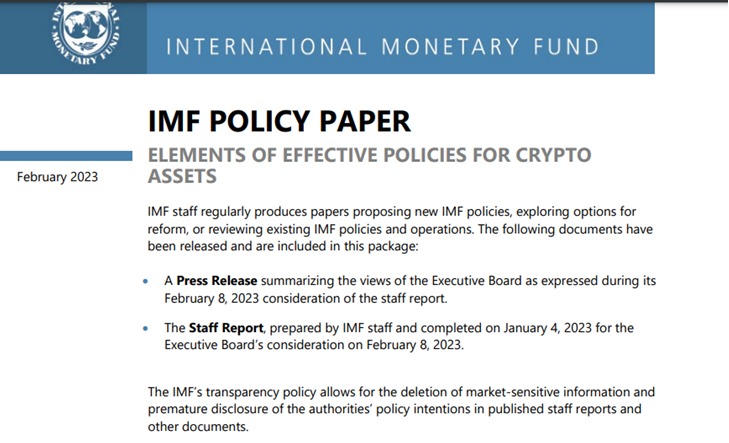
Elements of Effective Policies for Crypto Assets
As part of the discussion on digital economy IMF experts prepared recommendations on how to improve the efficiency the management of crypto assets.
The Fund identifies 9 key elements of the strategy of state regulation of crypto assets, which can be conditionally divided into 3 groups: macroeconomic, legal and international aspects.
The IMF recommendations include:
1. Safeguard monetary sovereignty and stability by strengthening monetary policy frameworks and do not grant crypto assets official currency or legal tender status.
2. Guard against excessive capital flow volatility and maintain effectiveness of capital flow management measures.
3. Analyze and disclose fiscal risks and adopt unambiguous tax treatment of crypto assets.
4. Establish legal certainty of crypto assets and address legal risks.
5. Develop and enforce prudential, conduct, and oversight requirements to all crypto market actors.
6. Establish a joint monitoring framework across different domestic agencies and authorities.
7. Establish international collaborative arrangements to enhance supervision and enforcement of crypto asset regulations.
8. Monitor the impact of crypto assets on the stability of the international monetary system.
9. Strengthen global cooperation to develop digital infrastructures and alternative solutions for cross-border payments and finance.



